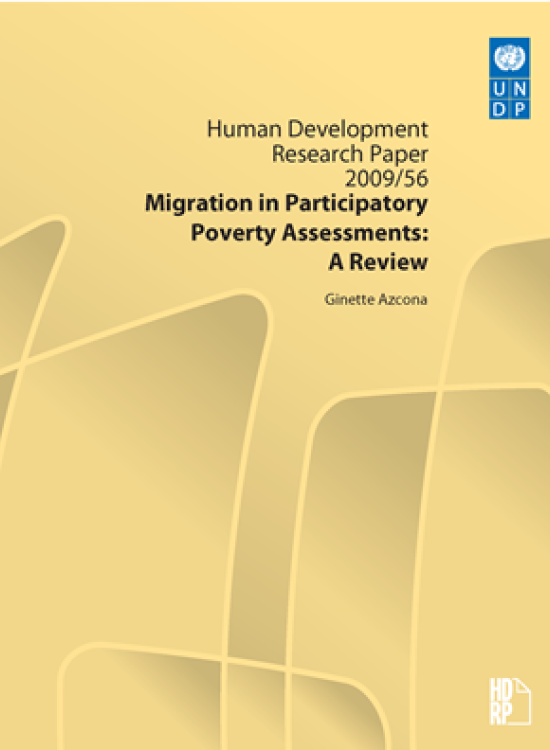Migration in Participatory Poverty Assessments: A Review

Download Report by Language
Document
hdrp200956.pdf
(442.77 KB)
Citation
Azcona, Ginette. 2009. Migration in Participatory Poverty Assessments: A Review. New York.
Migration in Participatory Poverty Assessments: A Review
Posted on: January 01, 2009
This paper reviews the treatment of migration in Participatory Poverty Assessments (PPAs), conducted in 14 different countries. The analysis suggests that for the very poor, migration is most often rural to rural and rural to urban and not across borders. The drivers of migration are context specific, but are generally related to the pursuit of greater livelihood opportunities, greater access to education and health services, and at times necessitated by crises resulting from conflict or natural disaster. Migrants are typically young men, although more and more women are also leaving villages in search of paid work. Interestingly, while the feminization of migration contributes to greater investments in education, some evidence suggests that the impact is not uniform across all school-aged children in the household. Finally, in a number of countries, households with migrants were more likely to be categorized as well-off, regardless of their level of assets. Significant differences in impacts corresponding to the type of migration (internal versus international), and duration (i.e. seasonal, temporal, and permanent) were also observed.